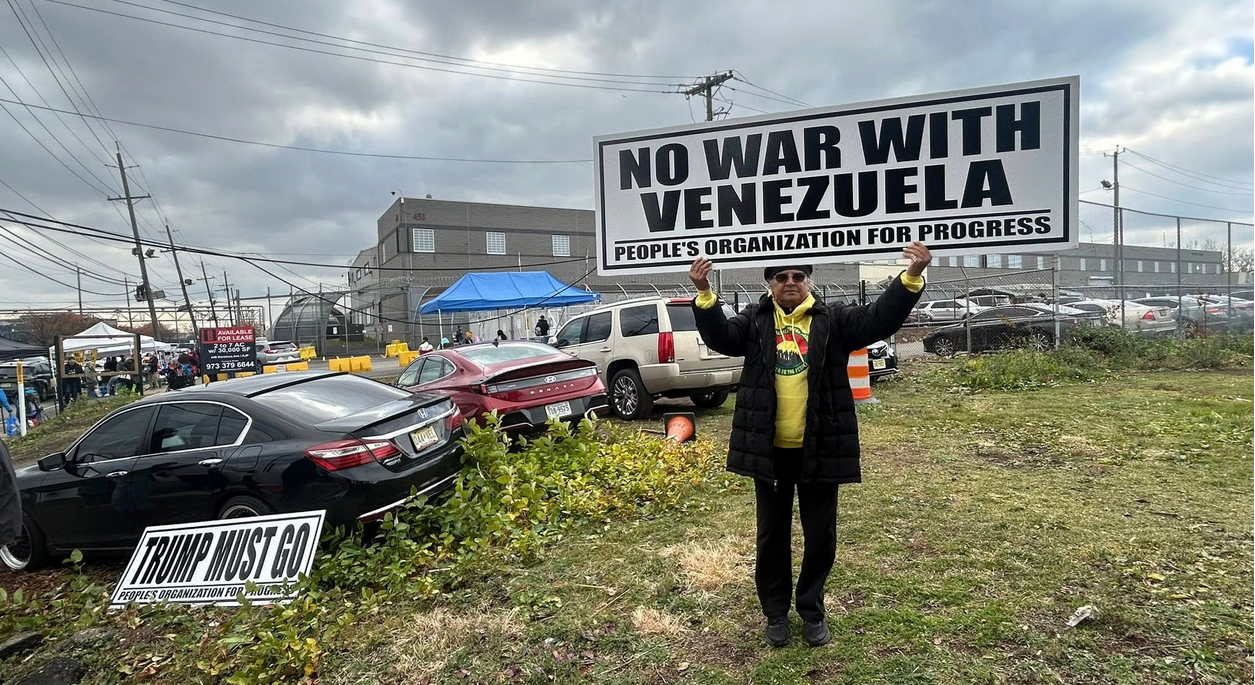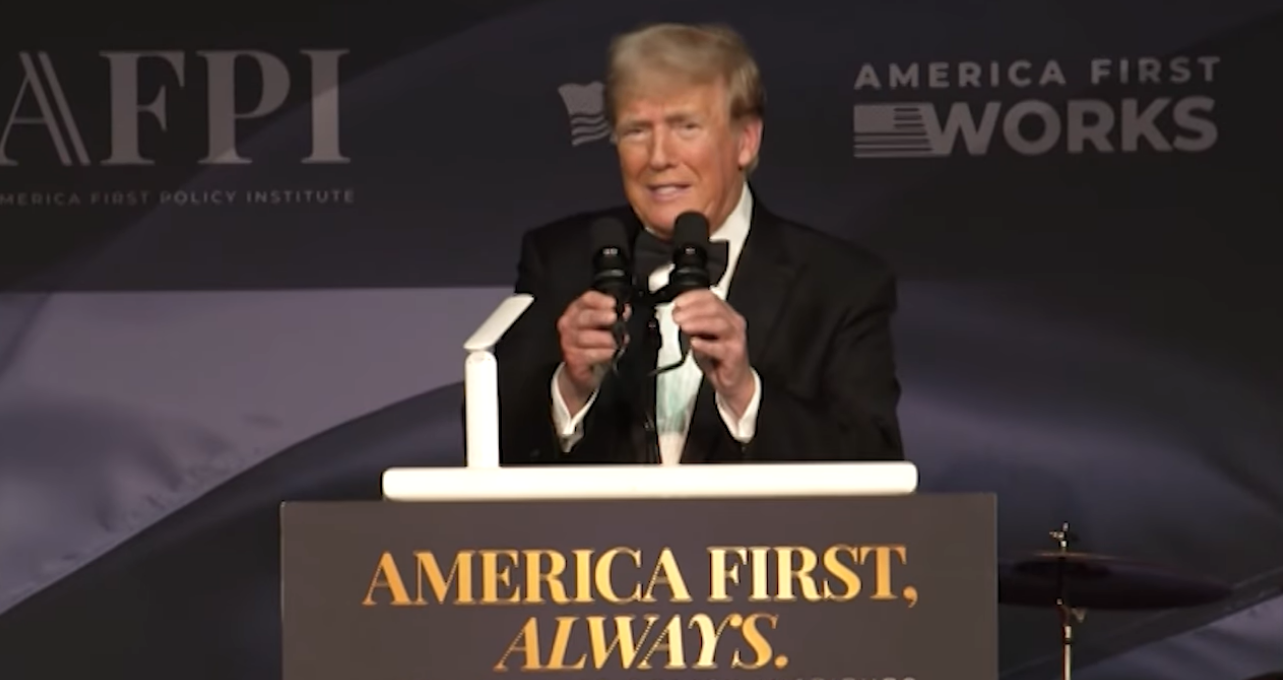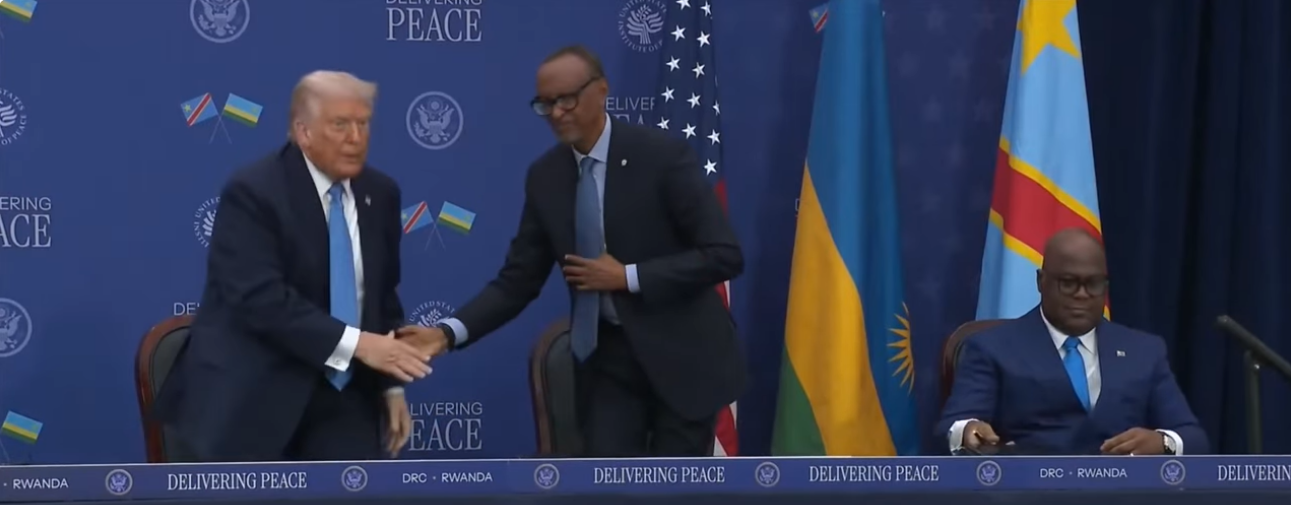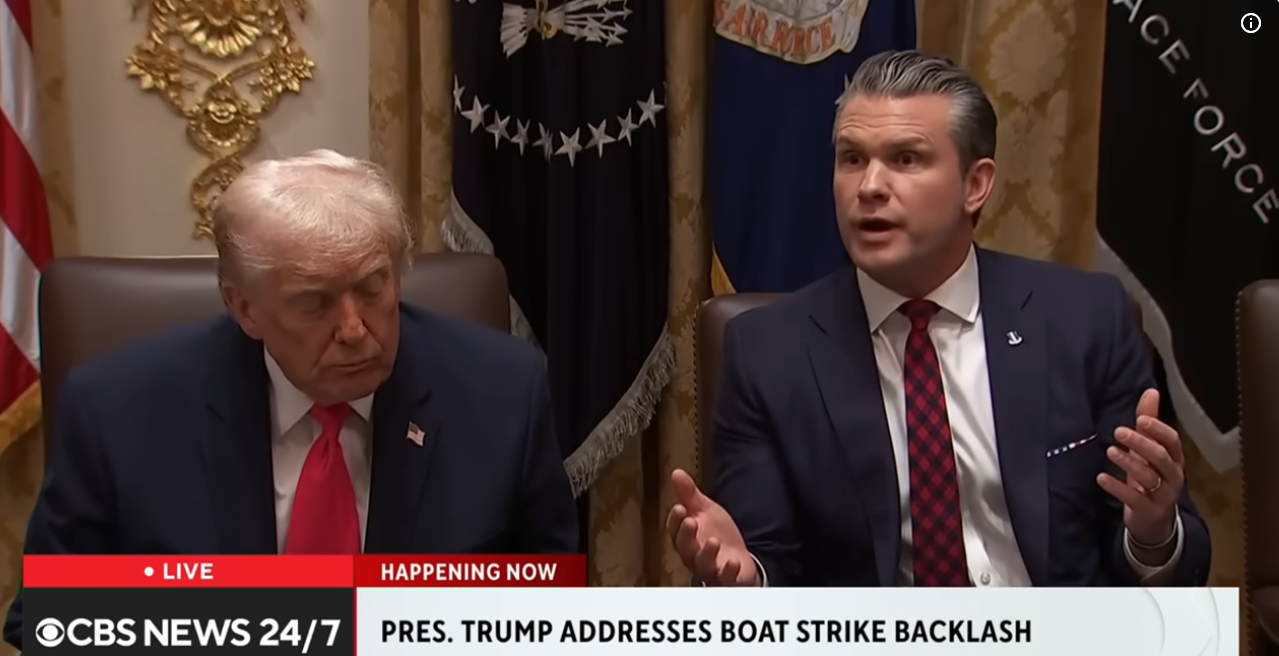[COVID-19\Tax Breaks for Wealthy]
The CARES Act was supposed to offer much needed comfort to those suffering most from the pandemic. But hidden in the bill was an obscure provision allowing wealthy owners…to leverage losses into big tax savings and refunds.
Photo: YouTube
Some 43,000 millionaires are benefiting more from the CARES Act than regular Americans.
Leading members of Congress and a broad coalition of advocacy groups under the Americans for Tax Fairness umbrella have launched a campaign to repeal a huge tax break for millionaires included in the $2 trillion COVID aid package passed in late March known as the Coronavirus Aid, Relief, and Economic Security (CARES) Act.
The CARES Act was supposed to offer much needed comfort to those suffering most from the pandemic. But hidden in the bill was an obscure provision allowing wealthy owners of noncorporate businesses, especially real estate firms and hedge funds, to leverage losses into big tax savings and refunds.
The Joint Committee on Taxation (JCT) estimates the provision will cost the government $135 billion in lost tax revenue over the next 10 years (Title II.C.5), all of it during height of the crisis this year and next. (Due to a “computational error,” JCT’s original cost estimate was nearly $170 billion.) That $135 billion is over three times more than the CARES act spends on safety-net programs ($42 billion), exceeds the amount for hospitals ($100 billion), and nearly matches what will go to state and local governments ($150 billion).
This huge loophole will give business owners making over $1 million—just 43,000 privileged households—over 80% of the tax break, an average of $1.6 million each. (The JCT told members of Congress that the distribution by income group of the now $135 billion tax cut is the same as it was for the original $170 billion estimate.) By contrast, the CARES Act offers one-time checks of up to only $1,200 to as many as 150 million individuals.
Sen. Sheldon Whitehouse (D-RI) and Rep. Lloyd Doggett (D-TX) are lead sponsors of legislation to repeal this offensive tax break. Their bills have attracted 18 cosponsors in the Senate (including six senators who ran for president this cycle) and nearly 40 in the House. Their effort has been endorsed by 177 organizations that continues to grow. The plan is to attach the repeal measure to the next COVID-19 aid package, which is expected to focus on providing federal financial support for state and local government budgets collapsing under the pandemic.
How the Tax Break Works
Wealthy business owners often have other sources of income, whether a top-dollar salary or hefty investment gains. Meanwhile, their noncorporate “pass-through” businesses (sole proprietorships, partnership, and S corporations) pay no income taxes themselves, but instead pass through profits and losses to the owners, who pay any tax due at individual rates on their personal returns. These “pass-through” owners’ taxable income combines business results with their other income. If the business suffers a loss, it can be subtracted from the owner’s nonbusiness income to lower tax liability.
The 2017 Trump-GOP tax law gave noncorporate businesses a big break (a 20% income deduction when figuring taxes due) and partially paid for it by limiting to $500,000 the amount of business losses a couple could use to offset nonbusiness income ($250,000 for an individual). The CARES Act lifts that reasonable cap, so any amount of nonbusiness income (including from salary, the stock or vacation home they may have sold—no matter how big) can now be erased by business losses—and there will be plenty of business losses in the coming years.
Other tax giveaways in the CARES Act further sweeten the deal.
One allows the deduction of the full value of losses—the 2017 law had limited it to 80%—and another lets business owners apply losses to earlier years in which taxes were already paid, generating refunds. (These provisions apply to corporations as well, at an estimated 10-year revenue cost of $26 billion.)
That “carry back” allowance applies not only to this COVID-ravaged year, but 2018 and 2019 as well, when losses can’t be blamed on a pandemic. And they can be carried back up to five years, to the time before the 2017 tax law cut rates, such that any refund generated now will be based on taxes paid at higher rates (35% for corporations, rather than the current 21%) and therefore be commensurately larger.
Likely big winners from these generous new business-loss rules are real estate developers like President Trump and his son-in-law Jared Kushner. That’s because real estate professionals can claim big paper losses even on properties that are actually gaining in value. Trump and Kushner have in the past both used huge claimed losses to dodge millions of dollars in taxes. President Trump’s company, the Trump Organization, is not a single entity but rather a collection of roughly 500 pass-through businesses. Since the Trump family may benefit greatly from the tax handout in the CARES Act, it’s reasonable to speculate whether there was White House pressure to include the provision in the law.
Criticism of the Millionaires Giveaway
Presumptive Democratic presidential candidate Joe Biden noted the “tax cut overwhelmingly benefits the richest Americans and is unnecessary for addressing the current COVID-19 economic relief efforts.”
Sen. Whitehouse and Rep. Doggett, two leading members of the Senate and House tax writing committees, have demanded information from the Trump administration on the lobbying behind the inclusion of this tax handout to the wealthy in a disaster-relief bill. They also published an op-ed in USA Today explaining their objections to the tax giveaway.
The New York Times and Orlando Sentinel both published exposes of the hidden handout.
The $135 billion tax cut doled out to wealthy business owners comes with no strings attached. There is no requirement they pay the money back or use any of it in ways that would help the U.S. recover from the pandemic or the resulting recession. Other aid going to wealthy entities under the CARES Act comes with conditions and oversight. For example, in return for their $60 billion bailout airlines had to agree not to lay off workers, buy back their own stock or pay dividends to shareholders. Businesses receiving aid under the “Paycheck Protection Program” are similarly barred from firing workers.
The one public defender of this giveaway has been Senate Finance Committee chairman Chuck Grassley (R-IA) in a Fox News op-ed, in which he made claims and arguments that were easily rebutted. His public championing of the tax break combined with his position of tax-writing leadership strongly indicate “Grassley Giveaway” is an apt nickname for the provision.
Where the Money’s Actually Needed: Struggling States and Cities
The $135 billion wasted on wealthy business owners through this tax break would find ready use by state and local governments struggling with increased public needs, fewer public resources and no ability to borrow to make up the difference.
The nation’s governors are seeking $500 billion in immediate relief to fund joint federal-state Medicaid programs, buy more COVID treatment and testing supplies, shore up overwhelmed unemployment systems, and meet other urgent demands. Counties, cities and towns are seeking $250 billion in federal coronavirus aid. Counties alone face a combined COVID budgetary impact of over $140 billion through next year.
Republican leaders are resisting calls for another COVID relief bill that would include a lifeline for states and cities. Senate Majority Leader Mitch McConnell has cited the “level of national debt” created by the first rescue bills as a reason to delay more aid and has suggested local governments should declare “bankruptcy” to deal with the economic fallout. Yet he makes no mention of reducing that debt load by repealing the millionaires giveaway in the CARES Act.
Repairing the Damage: What Congress Can Do Now
The Senate passed the CARES Act before the cost of the bill—including the millionaires giveaway—had been calculated; the House passed it the day after the (initial) budget score was released. The distributional effects of the giveback showing millionaires would receive the lion’s share wasn’t provided until some two weeks later, and then only after a special request.
The simplest and best solution would be to revoke the entire provision and use the $135 billion saved to help shore up the collapsing finances of states and cities. Congress has revoked handouts like this in the past. In 1997, a $50 billion giveaway to the tobacco industry was snuck into a tax-cut bill. When it was discovered, Congress swiftly and overwhelmingly voted to revoke it. There are also possible fixes short of full repeal that would lessen the damage.






